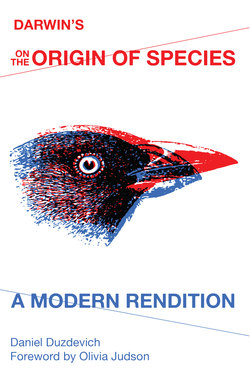Читать книгу Darwin's On the Origin of Species - Daniel Duzdevich - Страница 6
На сайте Литреса книга снята с продажи.
A NOTE TO THE READER
ОглавлениеDaniel Duzdevich
BIOLOGY OF THE VERY SMALL IS WHAT FASCINATES ME. THIS small world is jostled by the motions of water molecules and crisscrossed by intricate chemical reactions. It is a world over which DNA and protein have dominion. And it is a world that unifies life. At the scale of biological molecules, all that is alive proves to be essentially the same. Bacteria swarming in soil, yeast fermenting a lump of moist flour, and humans eating bread are all built from a common cellular machinery. The universalities of molecular biology are explained by a concept central to the Origin: all life on earth is related, every species a branch on a single tree. Darwin was the first to recognize this shared ancestry, which we have since discovered to be written into our very molecular makeup. The Origin is perhaps even more fascinating today, for all we have learned of the natural world, than it was in 1859.
Evolution is so entangled with the most basic elements of biology that I encountered the subject well before discovering Darwin. The underlying sameness of living things shocked me when I first learned about cells and genes. It still shocks me – the implication that life is continuous and interconnected through time. What struck me the first time I read the Origin was that Darwin, through a mass of seemingly disconnected observations, before genetics and before biochemistry, had formulated a theory so powerful that it elegantly accounts for biological universality. It is this insight more than any other – and there are many – that motivated me to pore over Darwin’s writing, to try to understand an idea that transformed biology into a science. My interests soon expanded as I undertook a project to make the Origin more accessible to more people. This book is the result.
It is a clear, modern English rendition of the first edition of the Origin. It is not an abridgment. The concepts have not been modified or summarized. The sentence and paragraph order have largely been preserved, and the linguistic flavor of the original remains.
A few systematic changes are worth highlighting. Some of Darwin’s asides are better suited to footnotes, even though he uses none in the original. In the few cases where I supplement the text with a footnote of my own, they are enclosed by brackets and followed by my initials, as in [This is an editorial footnote. – D.D.].
The word “niche” replaces phrases like “place [of an organism] in the polity/economy of nature.” “Niche” had not yet been established as a technical term in Darwin’s time, but it is now used in ecology to describe an organism’s “place” relative to its environment. “Environment” replaces “conditions of life.” Darwin understood that a given environment includes other organisms, so he sometimes specifies just the physical conditions of life – that is, the physical environment (climate, for example).
Where Darwin uses “affinity,” I generally use “relationship.” “Affinity” referred to certain types of similarities among species in the terminology of then-contemporary natural history. In those days, species were grouped according to a variety of schemes, but there was no satisfactory explanation for the features of those groupings. Darwin explained them as a result of common descent so that affinities were transformed into actual relationships between species. He also noticed that similar environments sometimes lead to similar evolutionary solutions to some specific challenge. For example, many cave-dwelling species from wholly distinct branches of the evolutionary tree – such as insects and fish – have evolved blindness. The modern term for this phenomenon is “convergent evolution.” Darwin labels it “analogical,” or, confusingly, “adaptive”; I use “analogical” for consistency and clarity.
Dissecting Darwin’s phrases helps me understand the concepts woven into the Origin, concepts that are easy to take for granted in the day-to-day work of the laboratory. Modern molecular biology routinely harnesses the universal qualities of living things. A typical study may involve a bacterial strain coaxed into producing large quantities of a protein native to yeast, a markedly different type of organism. Bacteria and yeast are very distantly related, having diverged from a common ancestor billions of years ago. But that common ancestor already possessed the most fundamental, and the most important, molecular qualities of life – including DNA as the hereditary material, and the machinery needed to manufacture proteins based on information carried by a gene. These characteristics are so important for the very existence of a cell that they cannot be altered in any essential way, so they are passed on from generation to generation, all the way through to the cells growing in a couple of flasks in a laboratory. This continuity explains why bacteria can correctly read a gene from yeast in order to make protein: the two species converse in one molecular language, as all living things do. The phenomenon of shared characteristics applies to successive groupings of the evolutionary tree. All animal embryos, for example, share a common molecular and cellular system for development, inherited from a common ancestor. Darwin observed that such commonalities cluster together in this way, and he recognized their origin: it is common ancestry, which makes the modern science of biology possible, and understandable, and sometimes wonderfully shocking.
